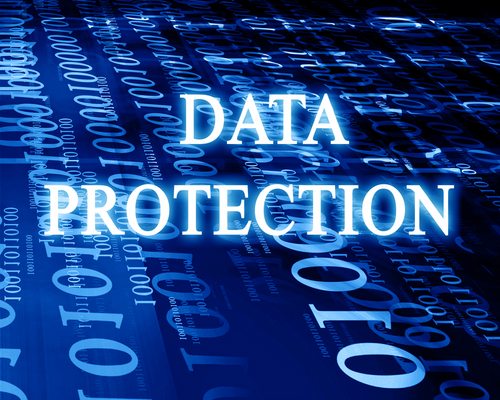In today’s rapidly evolving digital landscape, organizations face an ever-increasing number of cybersecurity threats. Among these, insider threats are among the most challenging and potentially damaging. Insider threats are the intentional or unintentional misuse of an organization’s assets, systems, or data by individuals within the organization. These individuals may include employees, contractors, or business partners with legitimate access to sensitive information.
Modern Data Loss Prevention (DLP) solutions have emerged as a crucial defense mechanism against such threats, helping organizations safeguard their data and prevent potential breaches. This article delves into the concept of insider threats, explains DLP, and explores how DLP can effectively protect against insider threats.
What is an Insider Threat?
An insider threat is a cybersecurity risk that originates from within an organization. It involves individuals who possess authorized access to the organization’s resources but misuses that access for malicious purposes. The motivations behind insider threats can vary and may include financial gain, revenge, espionage, or unintentional errors. We can broadly categorize insider threats into three main types:
- Malicious Insiders: These individuals deliberately misuse their access to steal sensitive data, commit fraud, or cause harm to the organization. They may exploit vulnerabilities in the system or collude with external threat actors.
- Negligent Insiders: Negligent insiders, often due to lack of awareness or training, inadvertently expose sensitive data or fall victim to phishing attacks, leading to data breaches.
- Compromised Insiders: External threat actors may compromise an employee’s credentials or device, turning them into unwitting accomplices to carry out attacks from within the organization.
Insider threats pose a significant challenge to organizations because traditional security measures often focus on external threats, leaving insiders with authorized access less scrutinized.
What is Data Loss Prevention (DLP)?
Data Loss Prevention (DLP) is a set of strategies, policies, and technologies designed to protect sensitive data from unauthorized access, use, or disclosure. DLP aims to identify, monitor, and prevent the leakage of sensitive information both within and outside the organizational network. Traditional DLP solutions primarily focused on monitoring and controlling data at the network perimeter. However, with the rise of cloud computing, mobile devices, and remote work, modern DLP has evolved to encompass a broader range of data protection measures.
Modern DLP solutions include the following components:
- Endpoint DLP: Extending DLP capabilities to endpoints such as laptops, smartphones, and tablets, ensuring data security beyond the corporate network perimeter.
- Cloud DLP: Integrating with cloud services to monitor and protect sensitive data stored or shared through cloud applications as data increasingly move to cloud environments.
- Contextual Analysis: Utilizing advanced analytics and machine learning to understand the context and content of data, allowing for more accurate detection and prevention of data breaches.
- Encryption and Access Controls: Implementing robust encryption mechanisms to protect sensitive data in transit and at rest and enforcing strict access controls to limit data exposure.
- Real-time Monitoring and Response: Providing real-time monitoring and instant alerts to enable rapid response to potential data breaches or policy violations.
- Compliance Enforcement: Assisting organizations in adhering to relevant regulations and compliance requirements regarding data protection and privacy.
How does DLP protect against insider threats?
Modern DLP solutions employ user and entity behavior analytics (UEBA) to establish baseline behavior patterns for every user in an organization. If a user deviates from these patterns, the DLP solution will alert the security team so they can take preventative measures or launch an investigation into the user. Similarly, by continuously monitoring user activity, DLP solutions can flag suspicious behavior – such as large data transfers or abnormal data access – to security teams so they can address the problem before any data is lost.
Similarly, DLP tools classify data according to how sensitive it is. This information helps security teams adjust their monitoring and control processes, adding additional protections or access controls to the most critical data. This classification empowers organizations to protect against insider threats as it helps security teams determine who can and cannot access different types of data. The more sensitive the data is, the fewer users will have access to it.
Modern DLP solutions are extendable to endpoints. Extending DLP to endpoints ensures that sensitive data is safeguarded on devices even if not connected to the organization’s network. This guards against insider threats that may attempt to exfiltrate data from outside the corporate network.
However, modern DLP solutions are more than just reactive tools. If an insider threat succeeds, DLP provides security teams with valuable data for incident response and forensic investigations, helping identify the cause and scope of the breach and informing efforts to prevent a similar event from occurring.
Insider threats present a formidable challenge to organizations seeking to protect their sensitive data and assets. Modern Data Loss Prevention (DLP) solutions offer a robust defense mechanism against these threats, providing organizations with the tools and capabilities to monitor, detect, and prevent data breaches from malicious and accidental insiders. By combining behavioral analysis, context-aware monitoring, policy-based controls, and advanced encryption, DLP empowers organizations to safeguard their most critical assets and maintain trust with their customers and stakeholders in an increasingly interconnected and data-driven world. As insider threats continue to evolve, investing in robust DLP solutions is vital to a comprehensive cybersecurity strategy.
Josh is a Content writer at Bora. He graduated with a degree in Journalism in 2021 and has a background in cybersecurity PR. He's written on a wide range of topics, from AI to Zero Trust, and is particularly interested in the impacts of cybersecurity on the wider economy.
The opinions expressed in this post belongs to the individual contributors and do not necessarily reflect the views of Information Security Buzz.




